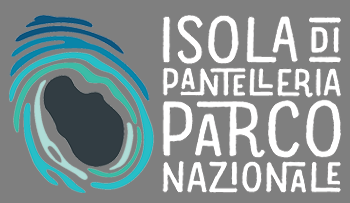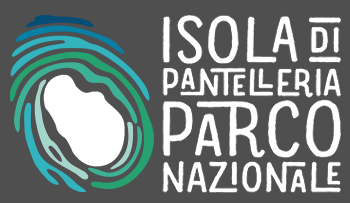- Producers of typical products
- Hiker's Vademecum
- Pantelleria Militare
- Forum
- Environmental Education
- The Authorities
- Organization and Offices
- Council Notice Board
- Transparent Administration
- Reference Legislation
- Regulations in force
- The plan of the Park
- Consultation of deliberative acts
Home » Natural landscape » Volcanism
Geosites in Pantelleria
According to the definition of Wimbledon (1) Geosite is "Any location, area or territory where a geological or geomorphological interest for conservation can be defined." This term can then be used in multiple contexts: for limited surface outcrops, for mines, for isolated elements and for groups of sites with considerable range extension. Geosites thus become a useful tool for the development, planning and enhancement of a territory, in which the "good" can be observed and understood in its "dynamic" environment reality.
In 2012, with ARTA Decree (Assessorato Regionale del Territorio e dell'Ambiente - Regional Department of the Territory and Environment) n. 87, the Regional Catalogue of Sicilian Geosites is established. From this moment on Sicily, the first Region in the national territory, is equipped with a legislative instrument that enhances with specific protection rules "those places or territories where it is possible to find a geological, geomorphological, paleontological, mineralogical interest, and that must be preserved, presenting a scientific/environmental value...". This Decree, together with the Regional Law n. 25 of 11 April of the same year ("Regulations for the recognition, cataloguing and protection of Geosites in Sicily") focuses on Geological Heritage in order to disseminate knowledge, use and enhancement. This very important first step led, subsequently, to the establishment of a Regional Geosite Catalogue (i.e. a database that can be consulted online) which contains the systematic collection of information regarding the sites of geological interest in Sicily, starting from the scientific characteristics of the site, to the presence of possible constraints, to the state of conservation, to the possible risk of natural and anthropic degradation up to the hypothetical risk for the health of visitors.
This catalogue includes 85 Geosites, of which 4 on the Island of Pantelleria. In this island three Geosites are of volcanological interest and linked to manifestations of secondary volcanism (Favara Grande, Fumarole della Vecchia Caserma, Fumarole del Monte Gibele) while one is of hydro-geological interest (Lago Bagno dell'Acqua, incorrectly referred to as Lago Specchio di Venere).
The three Geosites of volcanological interest are linked to the secondary volcanic activity of an exhalation nature, that is gas emission through fumaroles, which in local jargon are said to be "favare". The Favara Grande, the Vecchia Caserma and the Monte Gibele are therefore places where, through cracks in the rock, water vapor is emitted (mixed with chemical compounds, especially (CO2) with temperatures that can reach 100 ° C. These fumaroles are the direct consequence, on the surface, of the loss of fluids due to the cooling of the magma chamber which is located about 3-4 km deep below the island. In some places the rocks affected by these hot vapours undergo a phenomenon of alteration with an evident change in the macroscopic colour (from dark brown/ black to brick red/yellowish ochre).
The Lago Bagno dell'Acqua, a Geosite of national interest, takes on considerable interest from the hydrogeological point of view as it represents the only hydrological element of the island. Technically it is a saline lake "endoreico" or a lake without land to the sea, in which the loss of water occurs only by evaporation, while the input through springs is in its southern shore. It has a sub-circular shape (450 mx 350 m), was formed within a caldera depression (Caldera Cinque Denti; Mahood and Hildreth, 1986, 2), occupies an area of about 20 hectares and contains about 800 thousand meters cubes of water. However the surface of the Lake, and therefore the quantity of water, and its altitude above sea level vary over time (e.g. on the map of the Military Geographic Institute at the scale of 1:25,000 the Bagno dell'Acquahas an area of about 194,000 m2 and an altitude of 2 meters above sea level; on the map of the Sicilian Region at the scale of 1:10,000 it has an area of approximately 136,000 m2 and a height above sea level of 0.3 meters, measurements taken in September 1992 after a particularly dry summer; reported, in May 1996, an area of approximately 200,000 m2 and 925,000 m3 of water: Aiuppa et alii 2007, 3). These fluctuations have significant effects on the chemical composition of the water of the lake (such as salinity, pH, etc.): the literature data show variations of even 50% of the values, with maximum peaks during the dry season and minimums during wet season.
In the south-eastern area of the lake, there is an area (some tens of square meters) characterized by continuous but slow (<0.1 l/s) hydrothermal manifestations with water leaking at a temperature between 34 and 58 ° C, often accompanied by bubbles bubbling gas. The water of these springs is rich in carbon dioxide (CO2), which represents 98% by volume of the gases emitted), but also by low concentrations of Nitrogen (N2), Oxygen (O2), Argon (Ar), Methane (CH4) , Hydrogen (H2) and helium (He) (D'Alessandro et alii 1994, 4; Parello et alii 2000, 5).Thanks to the presence, in the water, of these elements in some areas of the lake shores there are carbonate concretions and whitish foams. Finally, studies on the bathymetry of the reservoir highlight a maximum depth point in its central northern part, where 12.5 meters were measured (Bocchi et alii 1988, 6).
All these Geosites, being accumunate by the emission of gas of volcanic origin, can be potentially toxic to humans. However, carbon dioxide (which, as we have seen, is the most abundant percentage of gas) despite being colourless, odourless and tasteless, is denser than air and therefore accumulates at ground level where it can reach very high concentrations and be lethal only for the smaller organisms (as happens for example near the "mofete" of the Lago Bagno dell'Acqua, opportunely signalled).
(by Giuliana Raffaelli)
Bibliography
(1) Wimbledon W.A.P. (1999). Geosites - an International Union of Geological Sciences initiative to conserve our geological heritage. Polish Geological Institute Special Papers, n. 2, 5-8.
(2) Mahood G.A. and Hildreth W. (1986). Geology of the peralkaline volcano at Pantelleria, Strait of Sicily. Bulletin of Volcanology, n. 48: 143-172.
(3) Aiuppa A., D'Alessandro W., Gurrieri S., Madonia P., Parello F. (2007). Hydrologic and geochemical survey of the lake "Specchio di Venere" (Pantelleria island, Southern Italy). Environmental Geoloy, n. 53: 903-913.
(4) W. D'Alessandro, G. Dongarrà, S. Gurrieri, F. Parello, M. Valenza (1994). Geochemical characterization of naturally occurring fluids on the Island of Pantelleria (Italy). Mineralogica Petrografica Acta, n. 37: 91-102.
(5) Parello F., Allard P., D'Alessandro W., Federico C., Jean-Baptiste P., Catani O. (2000). Isotope geochemistry of Pantelleria volcanic fluids, Sicily Channel rift: a mantle volatile end-member for volcanism in southern Europe. Earth Planetary Science Letters, n. 180: 325-339.
(6) Bocchi G., Gabbianelli G., Lanzafame G., Lucchini F., Rabbi E., Rossi P.L. (1988). Relazione sui rilievi eseguiti sul "Lago di Venere", Pantelleria. Bull Italian Natl Group Volcanol n. 4: 63-73.
© 2024 - Ente Parco Nazionale Isola di Pantelleria
Via San Nicola, 5 - 91017 Pantelleria (TP)
Tel +39 0923/569412 - Email: info@parconazionalepantelleria.it - protocollo@pec.parconazionalepantelleria.it
Codice fiscale: 93077090814





